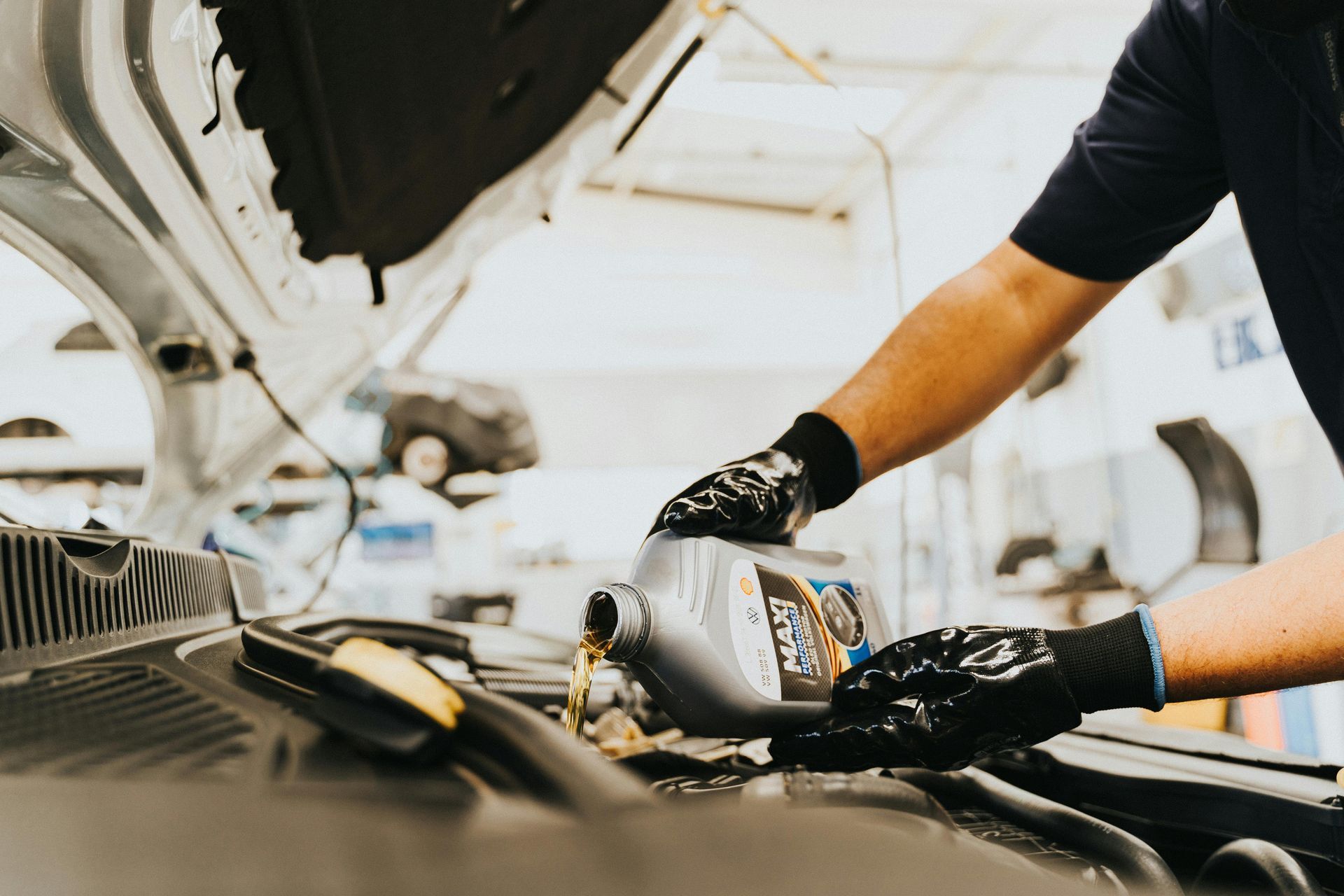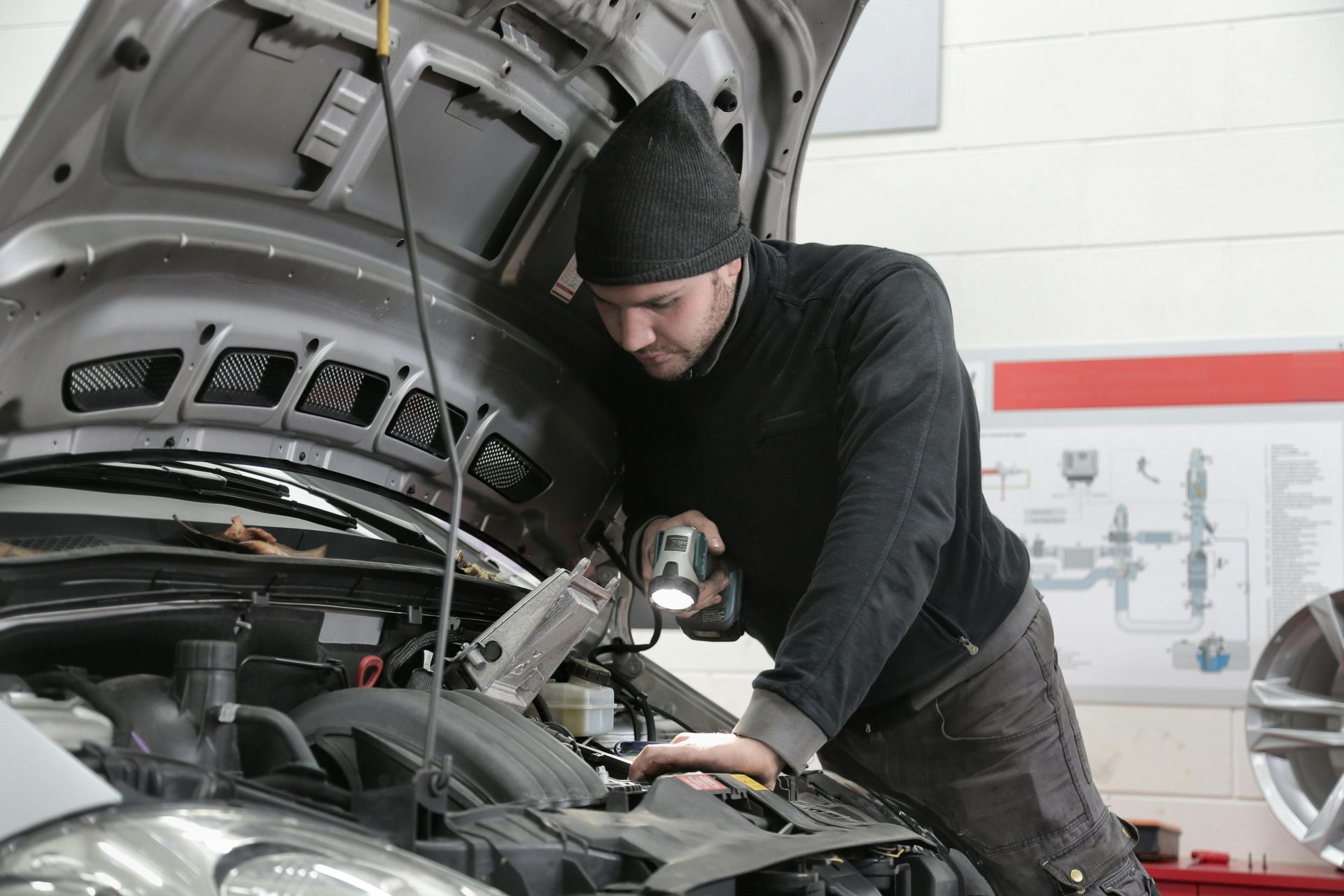Stay Comfortable Year-Round: The Importance of Proper Heating & Air Conditioning Maintenance for Your Vehicle in Heath, Ohio
In the midst of Ohio’s unpredictable climate, a well-functioning heating and air conditioning system in your vehicle isn’t just a “nice to have”—it’s an essential component of safe, comfortable driving. From the scorching highs of summer to the frosty mornings of winter, you rely on your car’s HVAC (Heating, Ventilation, and Air Conditioning) system to regulate temperature, ensure visibility, and protect you from the elements. At Jeremiah’s Automotive in Heath, Ohio, we believe that proactive maintenance and timely repairs can keep your HVAC system running at peak efficiency year-round.
In this comprehensive guide, we’ll explore the ins and outs of your car’s heating and air conditioning system: how it works, warning signs it may need attention, common issues that affect performance, and how Jeremiah’s Automotive can help you stay comfortable—no matter what Ohio weather has in store.
Why Vehicle Heating and Air Conditioning Matter
- Comfort: It’s hard to enjoy any drive—whether it’s a short commute to work or a family road trip—without a pleasant cabin environment.
- Safety: Fogged or iced-over windshields can severely limit visibility. A properly functioning HVAC system helps clear your windows quickly, especially in winter.
- Health: Adequate airflow and filtration prevent unwanted odors, allergens, and pollutants from circulating inside the vehicle.
- Vehicle Resale Value: A car with a faulty or neglected HVAC system can lose value quickly. A well-maintained system is a strong selling point if you ever decide to part ways with your vehicle.
How Your Car’s HVAC System Works
Before diving into maintenance tips and common problems, it helps to understand the basics of how your car’s heating and air conditioning systems function. While they share some components—like ductwork and blower fans—they operate on two distinct principles.
The Heating System
- Engine Heat: Your car’s heater uses heat generated by the engine’s combustion. As the engine runs, coolant circulates through it, absorbing heat.
- Heater Core: The heated coolant flows to a small radiator-like component called the heater core, usually located behind the dashboard. A blower fan pushes air through the heater core’s fins, warming the air that enters your cabin.
- Thermostat Control: You regulate cabin temperature through a thermostat and blend doors, which control how much warm (and sometimes cool) air flows into the cabin.
The Air Conditioning System
- Compressor: Powered by a belt on the engine, the compressor pressurizes refrigerant, turning it into a high-pressure gas.
- Condenser: The high-pressure refrigerant gas flows through the condenser, typically located in front of the radiator, where it cools down and condenses into a liquid.
- Expansion Valve or Orifice Tube: The pressurized refrigerant liquid then passes through an expansion device, reducing pressure and turning it into a cold, low-pressure gas.
- Evaporator Core: Air from outside (or recirculated cabin air) is blown over the evaporator core, cooling it before it enters the cabin. During this process, moisture condenses on the evaporator, helping dehumidify the air.
- Refrigerant Types: Modern vehicles generally use R-134a or the newer R-1234yf. Older cars may still have R-12, which requires special handling due to environmental regulations.
Common Heating & Air Conditioning Problems
HVAC systems are robust, but they’re not immune to wear and tear—especially in places like Heath, Ohio, where temperature extremes are the norm. Here are some typical issues you might encounter:
1. Weak Airflow
- Potential Causes: Clogged cabin air filter, failing blower motor, obstructed vents, or damaged ductwork.
- Symptoms: You’ll notice the air coming from the vents feels weaker or less forceful, making it hard to regulate the cabin temperature.
2. Insufficient Cooling or Heating
- Potential Causes (AC): Low refrigerant levels due to leaks, failed compressor, restricted condenser, or faulty expansion valve.
- Potential Causes (Heat): Clogged heater core, malfunctioning thermostat, low coolant levels, or air pockets in the cooling system.
- Symptoms: Despite cranking the AC or heat to the highest setting, the air temperature barely changes.
3. Strange Noises
- Potential Causes: A failing blower motor or loose belt for squealing noises; debris caught in the blower fan can cause rattling.
- Symptoms: Odd clunks, bangs, or squeals when you activate the heater or AC.
4. Unpleasant Odors
- Potential Causes: Mold or mildew in the evaporator core or cabin air filter, coolant leaks (a sweet smell), or burned plastic/rubber from a failing component.
- Symptoms: A musty or chemical-like smell wafts through the vents when the system is on.
5. Leaking Fluid
- Potential Causes: Refrigerant leaks from worn seals or hoses, coolant leaks from the heater core or connecting hoses.
- Symptoms: Visible fluid under your car (refrigerant can be oily; coolant is typically bright green, orange, or pink). Fogged windshields can also signal a heater core leak inside the cabin.
6. Electrical Control Issues
- Potential Causes: Faulty switches, actuators for blend doors, or wiring problems can disrupt the system’s ability to toggle between hot/cold or control fan speed.
- Symptoms: Inability to switch from heat to cool or a fan that only works on certain speeds.
Warning Signs Your HVAC System Needs Attention
Being proactive can save you from expensive repairs and inconvenient breakdowns. Keep an eye (and ear) out for these red flags:
1. Slower Defrost Times
- If your windshield remains foggy or icy even after several minutes, the heating system may be underperforming.
2. Sudden Drops in Heating or Cooling Efficiency
- A dramatic change in how quickly your cabin reaches your desired temperature often indicates a component failure.
3. Recurring Odors
- Musty or chemical smells suggest mold growth or a leak. Replacing the cabin air filter or addressing leaks can resolve these odors.
4. Rattling, Squealing, or Grinding Sounds
- Unusual noises often mean mechanical wear, a failing blower motor, or debris caught in vents.
5. Dashboard Warning Lights
- Some vehicles have warning indicators for low coolant or AC system malfunctions.
6. Visible Leaks
- Pools of coolant or greasy spots under your engine bay or near the dashboard can point to a heater core or refrigerant leak.
How Jeremiah’s Automotive in Heath, Ohio, Can Help
At Jeremiah’s Automotive, we offer a full suite of HVAC services to keep your car comfortable and safe, no matter the season. Here’s how we ensure your system stays in top condition:
1. Comprehensive Diagnostics
Our certified technicians use advanced diagnostic tools to identify HVAC problems quickly and accurately. Whether you’re dealing with low refrigerant pressure or a hidden coolant leak, we’ll pinpoint the issue before recommending a solution.
2. Refrigerant Services
- Leak Detection: We use specialized dyes and equipment to locate even small leaks.
- Recharge & Retrofit: If your AC system is low on refrigerant, we’ll recharge it to the manufacturer’s specifications. We can also retrofit older systems with environmentally-friendly refrigerants if needed.
- System Evacuation: After repairing leaks, we evacuate the system to remove air and moisture, ensuring optimal performance and longevity.
3. Heater Core & Cooling System Repairs
- Flushing & Replacement: If a clogged heater core or low coolant levels are causing lackluster heat, we can flush or replace components as needed.
- Thermostat & Hoses: A faulty thermostat or worn-out hoses can undermine heating efficiency. We inspect and replace these components to restore proper temperature regulation.
4. Blower Motor & Airflow Solutions
- Motor Replacement: A failing blower motor can drastically reduce airflow. Our team can replace it with a high-quality, OEM-spec or equivalent part.
- Cabin Air Filter: We recommend replacing the cabin air filter at least once a year—or more often if you drive in dusty conditions—to ensure clean, strong airflow.
5. Electrical & Control Systems
- Switches & Actuators: We can repair or replace faulty control switches and blend door actuators that prevent you from toggling between hot and cold or adjusting fan speeds.
- Wiring & Fuses: Our technicians will trace and repair any wiring or fuse issues that disrupt your HVAC system’s power.
6. Preventive Maintenance & Seasonal Check-Ups
Don’t wait until your AC fails on a hot summer day or your heater stops working in the dead of winter. With regular check-ups, we can catch minor issues before they become big problems, saving you time, money, and hassle.
The Value of Regular HVAC Maintenance
Just like any other part of your vehicle, the HVAC system benefits from periodic inspections and tune-ups. Not only does this approach help you avoid unexpected breakdowns, but it also optimizes your system’s efficiency and extends its lifespan.
1. Improved Air Quality
A clean HVAC system—complete with a fresh cabin air filter—reduces allergens, dust, and mildew, which is particularly beneficial for people with allergies or respiratory conditions.
2. Optimal Fuel Efficiency
When your HVAC system works efficiently, your engine doesn’t have to exert extra power to cool or heat the cabin. This can lead to marginal improvements in fuel economy.
3. Lower Repair Costs
Small issues—like a worn belt or a minor leak—are easy to fix. If left unchecked, they can escalate into major problems requiring expensive part replacements (e.g., compressor failures or a cracked heater core).
4. Safety & Visibility
A system that effectively defrosts and defogs your windshield is critical in Ohio’s variable weather. Fogged windows are a common cause of accidents, so you want that defrost function working reliably.
DIY Tips to Extend the Life of Your Heating & Air System
While many repairs and diagnostics are best left to professionals, there are simple steps you can take to keep your HVAC system healthier between service visits:
1. Run Your AC Periodically Year-Round
- Even in cold months, it’s a good idea to run the AC briefly. The refrigerant contains lubricants that help keep seals and hoses in good condition.
2. Monitor Coolant Levels
- Pop the hood and check your coolant reservoir. If it’s consistently low, there may be a leak in your cooling system or heater core.
3. Check for Debris
- Leaves, dirt, or other debris can clog the area around your windshield cowl, restricting airflow. Clearing this area periodically helps maintain good ventilation.
4. Replace the Cabin Air Filter
- Many cabin air filters are easily accessible behind the glove box or under the dashboard. Refer to your owner’s manual or ask our team for guidance.
5. Pay Attention to Changes
- If you notice strange smells, weaker airflow, or unusual noises, don’t ignore them. Early intervention can prevent bigger issues down the road.
Frequently Asked Questions (FAQs)
1. How often should I recharge my car’s AC system?
- There’s no set mileage or time interval for AC recharges. If you notice decreased cooling performance or a leak, schedule an inspection. A properly sealed system can run for years without needing a top-off.
2. Why does my car’s heater take so long to warm up?
- The engine needs to reach operating temperature before heat is transferred to the heater core. A stuck-open thermostat or low coolant can prolong warm-up times.
3. Can I use my air conditioner to defrost my windows in winter?
- Yes. Running the AC dehumidifies air, which helps clear fog and condensation faster. The system automatically adjusts temperature, so you’ll still get warm air in the cabin.
4. Is a musty smell normal when I first turn on the AC?
- A slight odor can occur due to moisture in the evaporator, but persistent or strong musty smells often indicate mold or mildew. Replacing the cabin air filter and cleaning the evaporator can help.
5. Should I repair or replace a faulty compressor if my car is older?
- It depends on the vehicle’s overall condition and how long you plan to keep it. Our team can assess repair vs. replacement costs and advise you on the most cost-effective solution.
Schedule Your Heating & Air Service at Jeremiah’s Automotive
Whether you’re dealing with weak airflow, inconsistent temperatures, or suspicious leaks, Jeremiah’s Automotive in Heath, Ohio, is here to help. Our team of ASE-certified technicians has the expertise and diagnostic tools needed to tackle any HVAC concern, from minor tune-ups to major repairs. We’ll get your system back in shape so you can drive comfortably and safely, regardless of the season.
Contact Us Today
- Phone: 740-788-9222
- Website: Jeremiah’s Automotive – Heating & Air
- Location: Heath, Ohio
Hours of Operation:
- Monday to Friday: 8:00 AM – 5:00 PM
- Saturday & Sunday: Closed (Call us if you need a special appointment)
Final Thoughts
Your vehicle’s heating and air conditioning system is integral to your comfort and safety on the road—particularly in Heath, Ohio, where temperature swings can be drastic. From clearing icy windshields in winter to keeping you cool in the middle of a humid summer, a properly maintained HVAC system ensures you can drive with confidence and peace of mind. By recognizing early warning signs and staying on top of routine maintenance, you’ll not only save on repair costs but also enhance the overall longevity of your vehicle.
Don’t let a faulty heater or AC compromise your daily commute or family trips. Turn to the team at Jeremiah’s Automotive for professional heating and air service. We’re committed to delivering honest, high-quality work so you can enjoy a comfortable, safe ride—whatever the weather decides to do.










